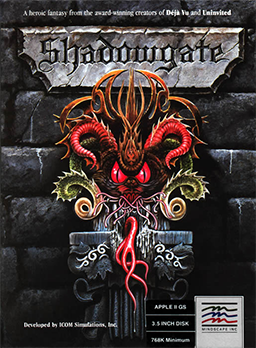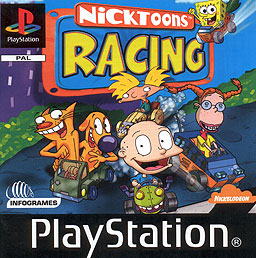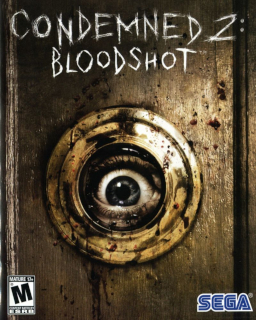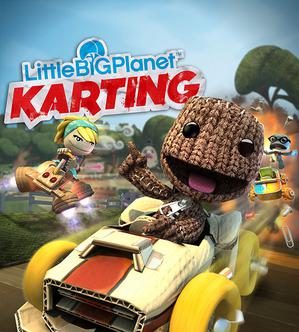In video games, a power-up is an object that adds temporary benefits or extra abilities to the player character as a game mechanic. This is in contrast to an item, which may or may not have a permanent benefit that can be used at any time chosen by the player. Although often collected directly through touch, power-ups can sometimes only be gained by collecting several related items, such as the floating letters of the word 'EXTEND' in Bubble Bobble. Well known examples of power-ups that have entered popular culture include the power pellets from Pac-Man and the Super Mushroom from Super Mario Bros., which ranked first in UGO Networks' Top 11 Video Game Powerups.

The Master Sword is a fictional divine magic sword in Nintendo's The Legend of Zelda series. It is also known as "The Blade of Evil's Bane", the "Sword of Resurrection", the "Sword that Seals the Darkness" and the "Sacred Sword". It was introduced in the 1991 action-adventure video game The Legend of Zelda: A Link to the Past and has since appeared in most other games in the series.

Shadowgate is a black-and-white point-and-click adventure game published for the Macintosh as part of the MacVenture series. The game is named for its setting, Castle Shadowgate, residence of the evil Warlock Lord. The player, as the "last of a great line of hero-kings" is charged with the task of saving the world by defeating the Warlock Lord, who is attempting to summon up the demon Behemoth out of Hell. Later that year, a color version of the game was released for the Amiga and Atari ST, and in 1989 for the Nintendo Entertainment System.

Claw is a 2D side-scroller platform video game published by Monolith Productions in 1997 about an anthropomorphic pirate cat who sets on a quest to find an ancient amulet while fighting enemies and solving puzzles. It is Monolith's second release after Blood, which was released that same year in May.

Crash Team Racing is a 1999 kart racing video game developed by Naughty Dog and published by Sony Computer Entertainment for the PlayStation. It is the fourth installment in the Crash Bandicoot series. The game's story focuses on the efforts of Crash Bandicoot, Doctor Neo Cortex, and other ragtag team of characters in the Crash Bandicoot series, who must race against the egomaniacal Nitros Oxide to save the Earth from destruction. In the game, players can take control of one of fifteen Crash Bandicoot series characters, though only eight are available at first. During the races, offensive and speed boosting power-ups can be used to gain an advantage.

Sneakers, released in Japan as Nezmix: Have A Mice Day!, is a video game developed by Media.Vision and published by Microsoft Game Studios exclusively for the Xbox in 2002. Sneakers is an action-puzzle game in which the player leads a group of mice to explore a house and its surroundings to detect enemy rats and protect their group in beat 'em up fights. Marketed as making use of 'fur shading' graphics, the design of the mice in Sneakers was intended to showcase the technical capabilities of the Xbox. The game was developed as one of two Japan-exclusive launch titles for the Xbox, and was later released in North America in an exclusive distribution with Toys R Us retail stores. Upon release in Japan, Nezmix sold poorly, with critics attributing the release to contributing to the poor launch of the console in the country. The North American version of Sneakers received generally unfavorable reviews, with criticism directed at the game's linear and repetitive gameplay.

Condemned: Criminal Origins, released as Condemned in Europe and Australia, is a first-person psychological thriller video game with survival horror and action elements for Xbox 360 and Microsoft Windows. Developed by Monolith Productions and published by Sega, it was an Xbox 360 launch title and was published in North America in November 2005, in Europe the following month, and in Australia in March 2006. The Windows version was released worldwide in April 2006. Monolith also released an online episodic flash game prequel, and there were plans for a film to expand the Condemned universe, with at least three additional games already mapped out by 2005. However, the film was never made, and the only addition to the franchise was Condemned 2: Bloodshot, which was released in 2008 for Xbox 360 and PlayStation 3.

Freddi Fish 2: The Case of the Haunted Schoolhouse is a 1996 video game and the second of five adventure games in the Freddi Fish series of games developed and published by Humongous Entertainment. It was released on iOS under the title Freddi Fish Haunted Schoolhouse Mystery and on Android with a shortened title Freddi Fish: Haunted Schoolhouse.

Toki Tori is a puzzle video game with platform elements, released by Capcom in September 2001 for the Game Boy Color. It was developed by Dutch video game development company Two Tribes and is their first published video game. The game follows a young chick, Toki Tori, and his quest to rescue his younger siblings, still in their eggs. To progress through the game, the player must pick up each egg on a level using a set number of tools, with new tools being introduced as the player progresses through the four worlds. This usually involves careful planning and creative thinking.

Nicktoons Racing is a Nickelodeon crossover racing video game. The game was first developed by Pipe Dream and released for the Game Boy Color, while versions for different platforms were released in subsequent years. Most versions were developed by Software Creations with the exception of the Game Boy Advance version, which was developed by Crawfish Interactive, and the arcade version, which was developed by Chicago Gaming.

Condemned 2: Bloodshot, released as Condemned 2 in Europe and Australia, is a 2008 first-person psychological thriller video game for Xbox 360 and PlayStation 3. Developed by Monolith Productions and published by Sega, it was released for both systems in North America and Australia in March 2008, and in Europe the following month. It is a sequel to the 2005 game Condemned: Criminal Origins.
In pen and paper games and computer and video games, an item is an object within the game world that can be collected by a player or, occasionally, a non-player character. These items are sometimes called pick-ups.

Avatar: The Last Airbender – Into the Inferno is a 2008 video game based on the Nickelodeon animated TV series Avatar: The Last Airbender. Like the previous two games which were set in the first and second seasons, the game's setting is based upon the show's third and final season. The Wii version was released on October 13, 2008 in North America and on November 1, 2008 in the UK. A PS2 version is also available and was released on October 31, 2008 in the UK.

ModNation Racers is a 2010 go-kart racing video game developed by United Front Games and San Diego Studio for the PlayStation 3 and PlayStation Portable. User generated content is a central aspect of the game, such that it uses the same "Play, Create, Share" adage as LittleBigPlanet to convey its basis in online user-generated content sharing and level creation tools.

Puzzle Quest 2 is a video game developed by Infinite Interactive for the Nintendo DS, Xbox Live Arcade, iOS, Android, Windows Phone 7, and Microsoft Windows. It was released on June 22, 2010 by D3 Publisher. A version for the PlayStation Portable was in development, but was cancelled due to sound bugs. It is the sequel to Puzzle Quest: Challenge of the Warlords, and like its predecessor, it combines role-playing with strategy and puzzle elements. It uses a competitive, Bejeweled-style, "match three game" playfield to simulate combat and other activities common to role-playing games.
Dragon Quest is a series of role-playing video games that originated in 1986 with the release of the first game in the series. Although the games are not related in terms of story, many aspects of the gameplay are consistent throughout the series. Each game in the series add new elements to the gameplay, such as longer quests, character classes, or different ways of story-telling.

LittleBigPlanet Karting is a kart racing video game developed by United Front Games and San Diego Studio, in conjunction with series creators Media Molecule for the PlayStation 3. It is the fifth game of the LittleBigPlanet franchise, and the third LittleBigPlanet game to be released on the console. The game was published by Sony Computer Entertainment and was released in November 2012.

Tarzan is a 1999 platform game based on the 1999 film of the same name. Versions were released in North America for the Game Boy Color on June 28, 1999, PlayStation and Microsoft Windows on June 30, 1999, and Nintendo 64 in February 15, 2000. In 2012, the PlayStation version was made available on the PlayStation Store for PlayStation Vita.

Hack 'n' Slash is a video game developed by Double Fine Productions. Prototyped during Double Fine's open Amnesia Fortnight 2012, Hack 'n' Slash is a top-down action-adventure game similar to The Legend of Zelda, though with in-game weapons and objects that allow the player to hack the game's world to achieve victory. The game was released to Steam's Early Access on May 6, 2014, for Microsoft Windows, OS X, and Linux computers. It left early access status and became a full release on September 9, 2014.

















